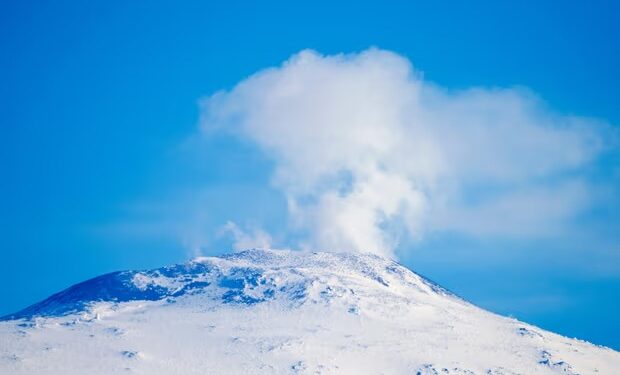On 8 July 2025, a groundbreaking study revealed that the rapid melting of glaciers and ice caps due to climate change could trigger a wave of explosive volcanic eruptions, particularly in regions like West Antarctica. Presented at the Goldschmidt Geochemistry Conference in Prague, the research highlights a dangerous feedback loop where melting ice reduces pressure on magma chambers, increasing eruption frequency and intensity, potentially accelerating global warming.
The study, led by Pablo Moreno-Yaeger at the University of Wisconsin-Madison, focused on Chile’s Mocho-Choshuenco volcano, using radioisotope dating to uncover a surge in volcanic activity after the last Ice Age, when glaciers retreated rapidly. The findings suggest that thick ice acts as a lid on magma chambers, suppressing eruptions. As glaciers melt due to global heating, this pressure lifts, allowing gases in magma to expand and trigger more frequent and explosive eruptions. West Antarctica, with over 100 volcanoes beneath its ice sheet, faces the greatest risk, raising concerns about catastrophic eruptions if ice loss continues unchecked.
Historical data support these findings. In Iceland, volcanic activity spiked dramatically 12,000 years ago as glaciers melted, a pattern now observed in modern glacier retreat. The research also notes changes in magma composition during deglaciation, with molten rock becoming more viscous and explosive as it melts crustal rocks under reduced pressure. This phenomenon, seen in Chile and Iceland, could repeat in Antarctica, where ice loss is accelerating due to fossil fuel-driven warming.
The implications are alarming. Volcanic eruptions can release greenhouse gases, further warming the planet and melting more ice, creating a vicious cycle. While some eruptions may temporarily cool the planet by injecting ash into the stratosphere, the long-term release of carbon dioxide could outweigh these effects. Brad Singer, a geoscientist involved in the study, likened the process to opening a pressurised bottle, where the sudden release of ice pressure causes magma to erupt violently. Regions like North America and the Andes could also see increased volcanic activity, though Antarctica remains the primary concern due to its vast subglacial volcanic network.
Scientists urge that these geological risks be factored into climate models, as current projections, like those in the 2015 Paris Agreement, may underestimate the consequences of ice loss. With glaciers in Western Canada, the Alps, and Greenland melting at double the rate of a decade ago, the threat of volcanic activity adds urgency to reducing emissions. Social media posts on X reflect growing concern, with users highlighting the potential for eruptions to disrupt global ecosystems and exacerbate sea level rise. The study underscores that as glaciers vanish, the Earth’s response could be explosive and far-reaching.
REFH – newshub finance










Recent Comments